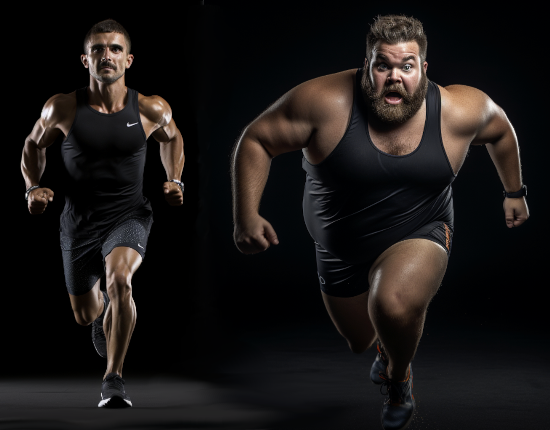
Preamble
Here are two facts about elite athletes that sound contradictory at first blush but aren’t:
- Elite athletes, being more efficient at propelling themselves, burn fewer calories per mile than muggles.
- Elite athletes, being better at turning calories into motion, burn more calories per hour than muggles.
It all makes sense when you think about it. Olympians are fuel-efficient, meaning they can do a lot with a little fuel, but also they’re very good at quickly transforming fuel into motion.
As Greg LeMond famously put it, it doesn’t get easier, you just go faster. But if you don’t go faster, then, yeah, it’ll get easier.
Elite athletes simultaneously burn fewer calories per mile and more calories per hour. How? By going many more miles in that hour than a normal human.
Paradox resolved!
The Actual Beeminder Part
So should you beemind miles or hours or miles per hour? Our answer is that hours is safest and simplest. Commit to putting in the time, at whatever level you’re currently capable of. It’s nice and predictable.
Miles is fine too. By which we mean distance. (Sorry for the imperial units but “miles” is a lot easier to say than “kilometers”! Depending on the sport, this could also be laps or vertical meters or steps or strokes or fathoms or furlongs.) Distance may be a more interesting metric than duration and we do think interestingness of the metric is paramount for beeminding.
But what if speed is what’s most interesting and important to you, as it might well be if you’re an aspiring elite athlete? Our answer is that that’s an outcome, not an action. So focus on beeminding the actions that help you get to the outcome. If you really want, go ahead and beemind speed too, just very conservatively. Use a shallow slope and low pledge cap. You don’t want to end up with an expensive beemergency you’re physically incapable of dispatching!
To round this out, and in case it’s a helpful resource, here’s a whole list of athletic metrics that might make for beemindable metrics:
- Duration
- Distance (horizontal or vertical)
- Speed (again, more outcome than action)
- Calories or kilojoules burned
- Power aka wattage (or multiply this by time to be more action than outcome, which is just calories or kilojoules)
- Cadence
- Hydration
- Time in heart rate zones
- Weight and body composition (standard warning about outcomes vs actions)
- Nutritional intake metrics (macro or micronutrients)
- Steps
- Number of intervals for HIIT training
- Total reps (e.g., pushups or pullups or squats)
- Volume load (weight lifted multiplied by reps and sets)
- Binary “showing up” / Tiny Habits goals: putting on running shoes, touching the door of the gym (HT Dan Byler)
If you have a metric you’re minding that we missed, let us know and we’ll augment the list!